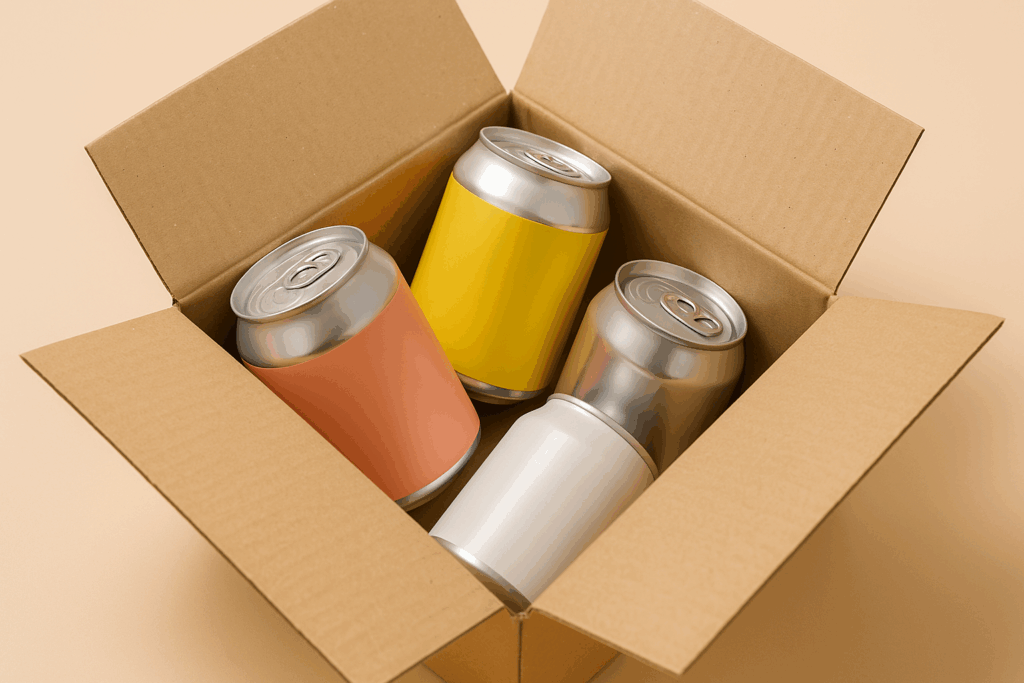The U.S. food and beverage (F&B) industry is one of the most dynamic and influential sectors of the global economy. From household staples to emerging plant-based startups, the market thrives on innovation, consumer trust and strategic marketing.
But what exactly is food and beverage industry and how does it fuel economic growth in the United States? This article explores how marketing drives demand, shapes trends and sustains one of the country’s largest industries.
The Economic Weight of the Food & Beverage Industry
The U.S. food and beverage industry plays a vital role in the national economy, supporting millions of jobs and driving manufacturing growth. According to the U.S. Department of Agriculture’s Economic Research Service, the sector accounted for 16.8% of all U.S. manufacturing sales and 15.4% of total employment in 2021 with over 42,000 processing establishments nationwide.
Spanning packaged foods, beverages, restaurants and breweries, the industry continues to expand globally valued at $8.71 trillion in 2025 and projected to reach $14.72 trillion by 2034 at a 6% CAGR. North America remains a key growth driver, fueled by innovation, exports and strong domestic demand.
In an industry this large, competition is intense. Effective food and beverage marketing helps brands differentiate themselves, capture market share and respond to evolving consumer behavior. It’s not just about advertising but it’s about strategy, storytelling and creating long-term economic impact.
How the Food & Beverage Industry Drives Growth
1. Expanding Consumer Reach and Awareness
The U.S. food and beverage industry reaches millions of consumers each day through stores, restaurants and digital platforms. In 2022, brands spent $7.5 billion on media for food, beverage and candy with restaurants contributing another $9 billion. These investments continue to drive visibility, loyalty and growth.
2. Accelerating Through Digital Transformation
Digitalization is reshaping how the industry operates and markets its products. Between 2021 and 2022, digital ad spending by restaurants and delivery platforms rose by nearly 75%, marking a major shift toward online engagement. Social platforms like TikTok and Instagram now drive discovery and influence which helps both legacy and emerging brands grow faster.
3. Adapting to Evolving Consumer Values
Modern consumers prioritize health, transparency and sustainability. They want clean labels, eco-friendly packaging and ethical sourcing. Brands that adapt by highlighting nutritional benefits, local ingredients or plant-based innovation gain stronger trust and higher market share.
Emerging Trends Shaping the Future of Food & Beverage Marketing
As the U.S. food and beverage industry continues to evolve, marketing strategies are adapting to meet changing consumer priorities and digital behaviors.
Health, Wellness & Functional Positioning
Consumers are demanding more than great taste but they want nutrition, transparency and function. Growth in plant-based, high-protein and clean-label products reflects this shift, pushing brands to position themselves as part of a healthy, sustainable lifestyle rather than just a meal choice.
Sustainability & Ethical Sourcing
Sustainability has become a defining factor in brand perception. From eco-friendly packaging to traceable supply chains, U.S. food and beverage brands are highlighting their ethical practices to win consumer trust and stand out in competitive markets.
Digital Engagement & Omnichannel Marketing
The rise of social media, influencer campaigns and DTC e-commerce has transformed how brands connect with audiences. Short-form video, user-generated content and interactive storytelling now drive engagement especially among younger consumers who value authenticity and convenience.
Data, AI & Real-Time Optimization
Data-driven marketing and AI-powered personalization allow brands to target niche audiences, predict trends and optimize ad spend. In the fast-paced U.S. food and beverage market, this precision marketing leads to stronger ROI and more meaningful consumer connections.
Partnering With the Right Food & Beverage Marketing Agency
When your brand is ready to scale, choosing the right marketing partner can make the difference between stagnation and acceleration.
What to Look For
- Look for agencies who has an expertise in food & beverage, understand consumer packaged goods, retail dynamics, supply chain and regulatory claims.
- Proven case studies with measurable business impact and not just creative awards.
- Agencies should have the ability to execute across channels, optimize spend and track ROI.
- You want a partner who understands your growth goals (U.S. market, scaling, brand/consumer dual focus).
Partnership Benefits
With the right agency, your marketing becomes a growth engine: sharper launches, better shelf visibility, stronger consumer loyalty and new channel expansion. This supports both brand growth and economic footprint.
Marketing That Feeds Both Brand and Economy
When U.S. food & beverage brands execute smart marketing, the benefit isn’t just increased sales but it also ripples into job growth, innovation, supply chain strength and regional economic activity.
Effective marketing helps brands stand out, secure market share, scale distribution and build long-term value. That growth helps communities, supports manufacturing, and strengthens the economy.
Ready to take your food & beverage brand to the next level in the U.S.? Contact MAVRK Studio and let’s begin the journey.





